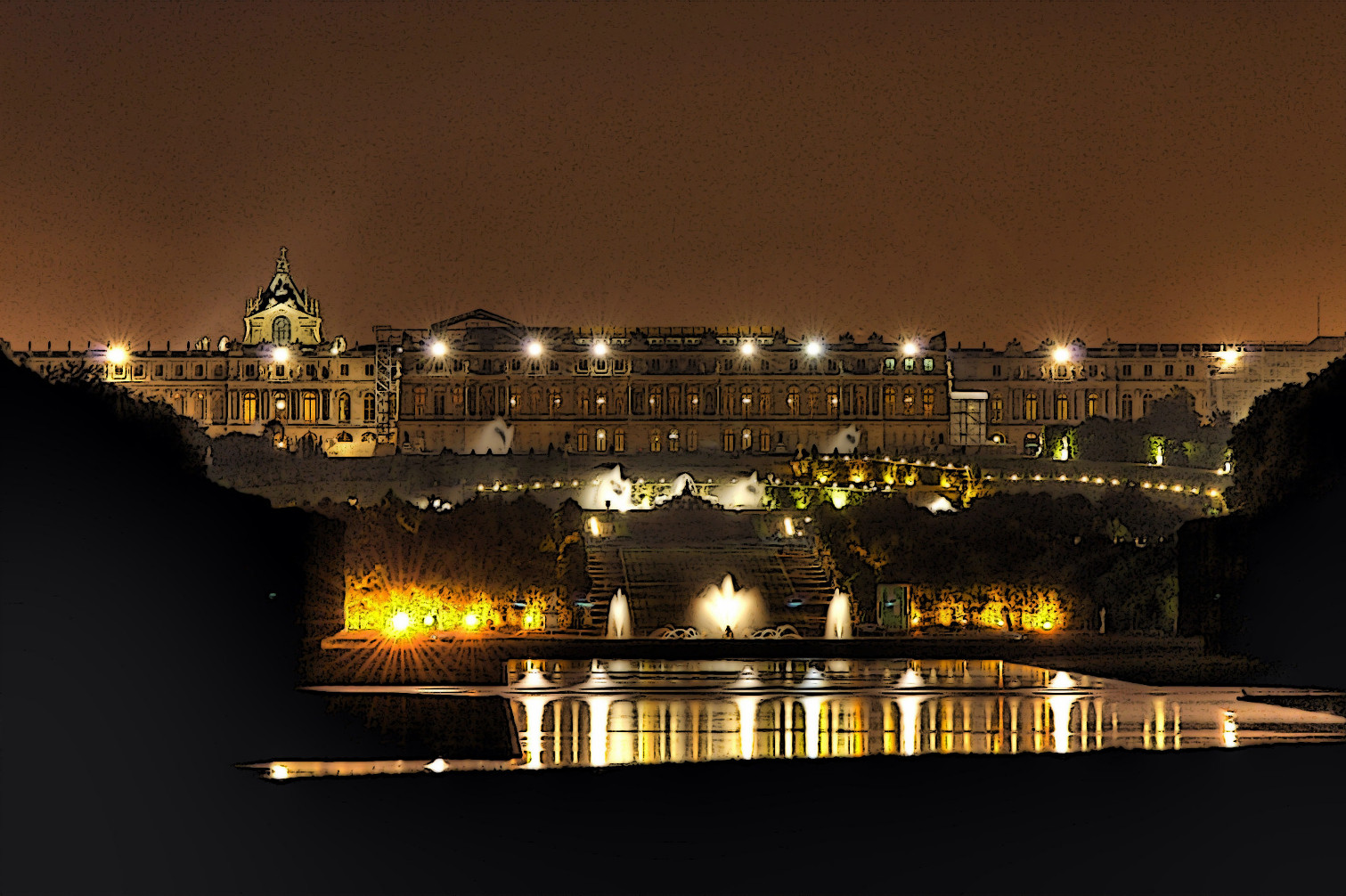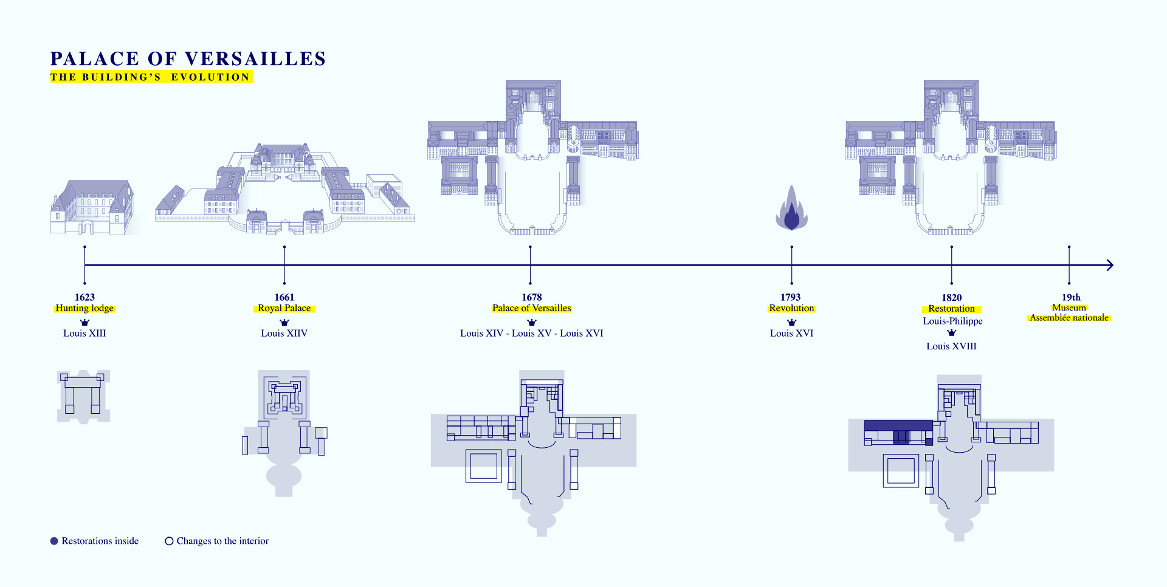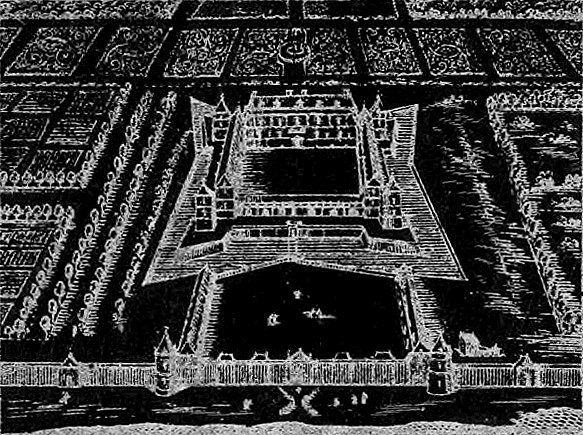Palace of Versailles
Introduction
The Palace of Versailles, or simply Versailles, is a royal château in Versailles in the Île-de-France region of France. It is also known as the Château de Versailles.
When the château was built, Versailles was a country village; today, however, it is a wealthy suburb of Paris, some 20 kilometres (12 miles) southwest of the French capital. The court of Versailles was the centre of political power in France from 1682, when Louis XIV moved from Paris, until the royal family was forced to return to the capital in October 1789 after the beginning of the French Revolution. Versailles is therefore famous not only as a building, but as a symbol of the system of absolute monarchy of the Ancien Régime.
Palatial Evolutions
Origins
The earliest mention of the name of Versailles is found in a document which predates 1038, the Charte de l'abbaye Saint-Père de Chartres (Charter of the Saint-Père de Chartres Abbey), in which one of the signatories was a certain Hugo de Versailliis (Hugues de Versailles), who was seigneur of Versailles.
During this period, the village of Versailles centered on a small castle and church and the area was governed by a local lord. Its location on the road from Paris to Dreux and Normandy brought some prosperity to the village but, following an outbreak of the Plague and the Hundred Years' War, the village was largely destroyed and its population sharply declined. In 1575, Albert de Gondi, a naturalized Florentine who gained prominence at the court of Henry II, purchased the seigneury of Versailles.
Ancien Régime
Louis XIII
In the early seventeenth century, Gondi invited Louis XIII on several hunting trips in the forests surrounding Versailles. Pleased with the location, Louis ordered the construction of a hunting lodge in 1624. Designed by Philibert Le Roy, the structure, a small château, was constructed of stone and red brick with a based roof. Eight years later, Louis obtained the seigneury of Versailles from the Gondi family and began to make enlargements to the château.
A vignette of Versailles from the 1652 Paris map of Jacques Gomboust (fr) shows a traditional design: an entrance court with a corps de logis on the far western end, flanked by secondary wings on the north and south sides, and closed off by an entrance screen. Adjacent exterior towers were located at the four corners with the entire structure surrounded by a moat. This was preceded by two service wings, creating a forecourt with a grilled entrance marked by two round towers. The vignette also shows a garden on the western side of the château with a fountain on the central axis and rectangular planted parterres to either side.
Louis XIV had played and hunted at the site as a boy. With a few modifications, this structure would become the core of the new palace.


